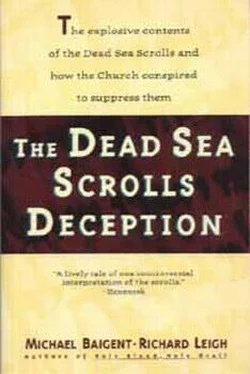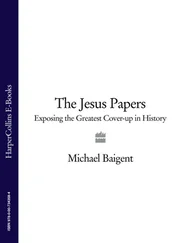4. The classical writers use the term ‘Essene’ to denote what they describe as a major sub-division of Judaism, along with the Pharisees and Sadducees. Nowhere in the Dead Sea Scrolls, however, is the term ‘Essene’ found.
5. Josephus declares the Essenes to have been on congenial terms with Herod the Great, who, he says, ‘had these Essenes in such honour and thought higher of them than their mortal nature required’. 15Yet the Qumran literature indicates a militant hostility towards non-Judaic authorities in general, and towards Herod and his dynasty in particular. What is more, Qumran appears to have been abandoned and uninhabited for some years precisely because of persecution by Herod.
6. According to classical writers, the Essenes were pacifist. Philo specifically states that their numbers included no makers of weapons or armour. 16Josephus emphatically distinguishes between the non-violent Essenes and the militantly messianic and nationalistic Zealots. Yet the ruins of Qumran include a defensive tower of a manifestly military nature, and what ‘can only be described as a forge’. 17As for the Qumran literature, it is often martial in the extreme, as exemplified by such texts as the ‘War Scroll’. Indeed, the bellicose character of such texts would seem to have less in common with what Josephus says of the Essenes than with what he and others say of the so-called Zealots — which is precisely what Roth and Driver claimed the Qumran community to be, thereby incurring the fury of de Vaux and the international team.
The Qumran community wrote mostly not in Greek, but in Aramaic and Hebrew. So far as Aramaic and Hebrew are concerned, no accepted etymology for the origins of the term ‘Essene’ has hitherto been found. Even the classical writers were mystified by its derivation. Philo, for example, suggested that, in his opinion, the name stemmed from the Greek word for ‘holy’, ‘ oseeos’, and that the Essenes were therefore the ‘ Oseeotes’, or ‘Holy Ones’. 18
One theory has enjoyed a certain qualified currency among certain modern scholars, notably Geza Vermes of Oxford University. According to Vermes, the term ‘Essene’ derives from the Aramaic word ‘ assayya’, which means ‘healers’. 19This has fostered an image in some quarters of the Essenes as medical practitioners, a Judaic equivalent of the Alexandrian ascetics known as the ‘Therapeutae’. But the word ‘ assayya’ does not occur anywhere in the corpus of Qumran literature; nor is there any reference to healing, to medical activities or to therapeutic work. To derive ‘Essene’ from ‘ assayya’ ’, therefore, remains purely speculative; and there would be no reason to credit it at all unless there were no other options.
In fact, there is another option — not just a possibility, but a probability. If the Qumran community never refer to themselves as ‘Essenes’ or ‘ assayya’, they do employ a number of other Hebrew and Aramaic terms. From these terms, it is clear that the community did not have a single definitive name for themselves. They did, however, have a highly distinctive and unique concept of themselves, and this concept is reflected by a variety of appellations and designations. 20The concept rests ultimately on the all-important ‘Covenant’, which entailed a formal oath of obedience, totally and eternally, to the Law of Moses. The authors of the Dead Sea Scrolls would thus refer to themselves as, for example, ‘the Keepers of the Covenant’. As synonyms for ‘Covenant’ and ‘Law’, they would often use the same words that figure so prominently in Taoism — ‘way’, ‘work’ or ‘works’ (’ma’asim’ in Hebrew). They would speak, for instance, of’the Perfect of the Way’, or ‘the Way of Perfect Righteousness’ 21 —‘way’ meaning ‘the work of the Law’, or ‘the way in which the Law functions’, ‘the way in which the Law works’. Variations of these themes run all through the Dead Sea Scrolls to denote the Qumran community and its members.
In the ‘Habakkuk Commentary’, Eisenman, continuing this line of thought, found one particularly important such variation — the ‘ Osei ha-Torah’, which translates as the ‘Doers of the Law’. 22This term would appear to be the source of the word ‘Essene’, for the collective form of ‘ Osei ha-Torah’ is ‘ Osim’, pronounced ‘Oseem’. The Qumran community would thus have constituted, collectively, ‘the Osim’. They seem, in fact, to have been known as such. An early Christian writer, Epiphanius, speaks of an allegedly ‘heretical’ Judaic sect which once occupied an area around the Dead Sea. This sect, he says, were called the ‘Ossenes’. 23It is fairly safe to conclude that the ‘Essenes’, the ‘Ossenes’ of Epiphanius and the ‘ Osim’ of the Qumran community were one and the same.
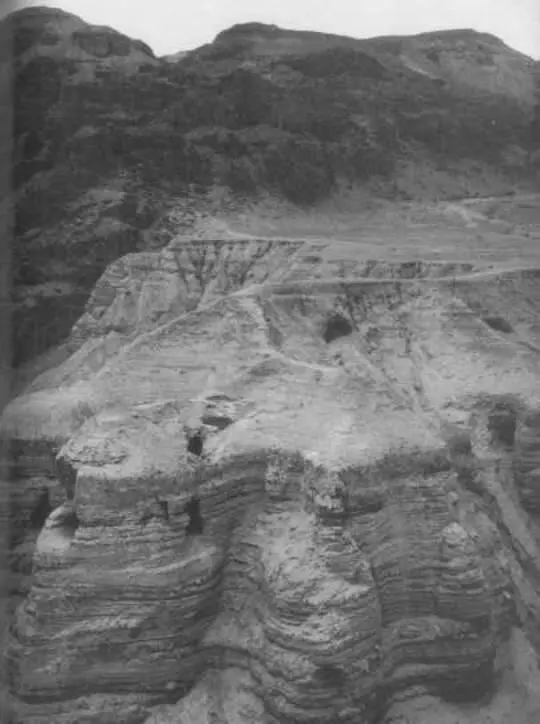
28. Qumran, showing the marl terraces. The photograph was taken from the ruins looking west towards the Judaean hills, with Cave 5 on the extreme left and the two openings of Cave 4 just to the right. The original entrance to Cave 4 can be seen above the right-hand opening.
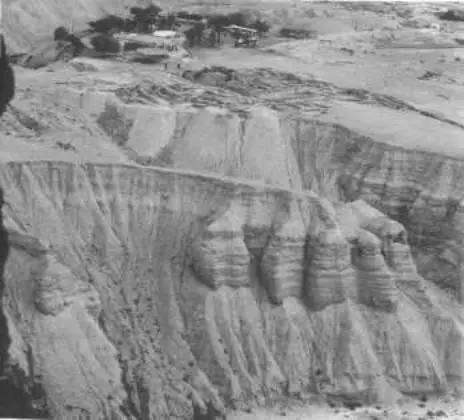
29. The ruins of Qumran. Caves 4 and 5 can be seen at the end of the nearer eroded cliff-face.
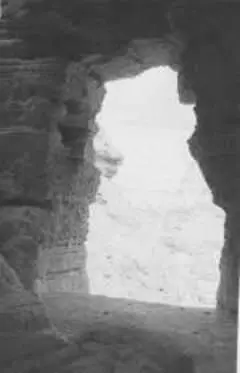
30. The interior of Cave 4, Qumran, where the largest number of fragments were discovered in 1952. Fragments of up to 800 different scrolls were retrieved.
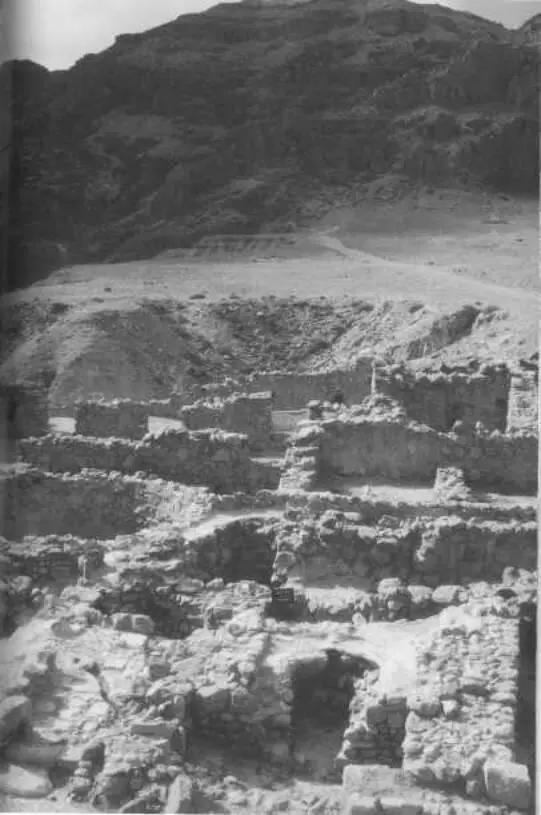
31. The Qumran ruins from the fortified tower. In the foreground are the remains of the circular weapons forge, to the left of which part of the water conduit has been exposed.
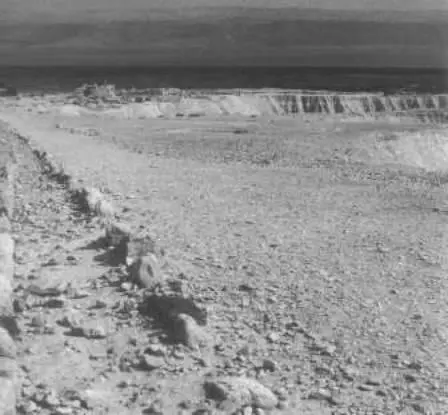
32. Remains of the main waterway into the Qumran community. The site had a complex water system fed from seasonal water flowing in the Wadi behind the ruins.
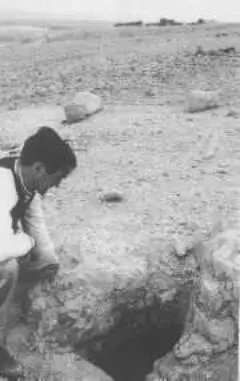
33. A cistern cut into the desert floor on the rocky terraces near to the Qumran ruins. Water control and storage were vital to the survival of such a community.
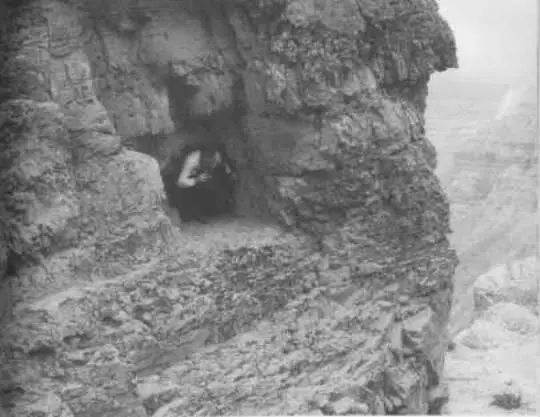
34. The water supply to Qumran depended upon this water tunnel carved through solid rock in the cliff-face. The water was dammed in the Wadi and directed through this tunnel.
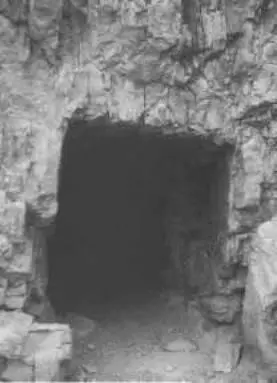
35. The exit of the water tunnel. From here the water flowed down the Waterway to the settlement itself.
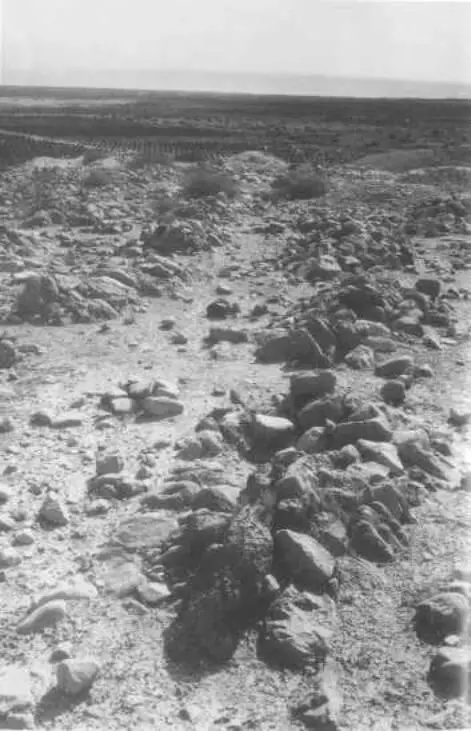
36. Several of the 1,200 or so rock-covered graves slightly to the east of the ruins. Aligned north-south, contrary to normal Jewish practice, the graves appear to be unique to the Qumran-type of community. A small number of graves has been opened, and the remains of men, women and children found.
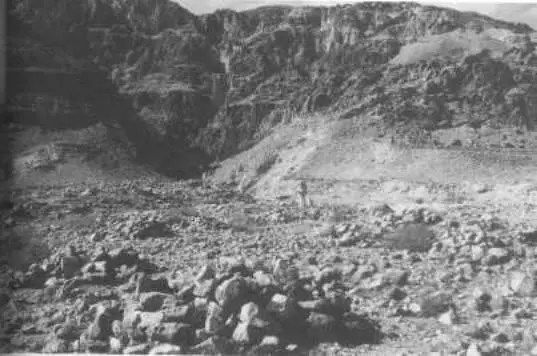
37. A dozen or so Qumran-type graves — aligned north-south — have been discovered some nine miles south of Qumran, at En el-Ghuweir. Clearly there was a settlement also on this site. The caves in the Wadi and cliffs behind may well have served as repositories for the same type of scrolls as were found near Qumran.
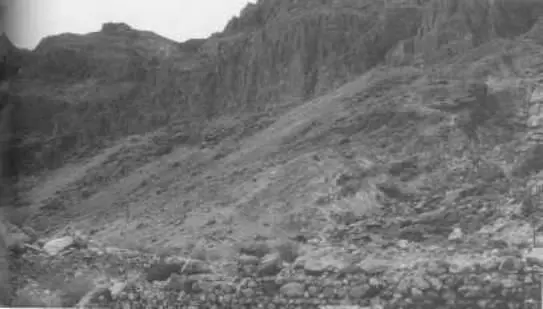
38. Ruins of a settlement at En el-Ghuweir near to the graves. The ruins have been dated to the Herodian period.
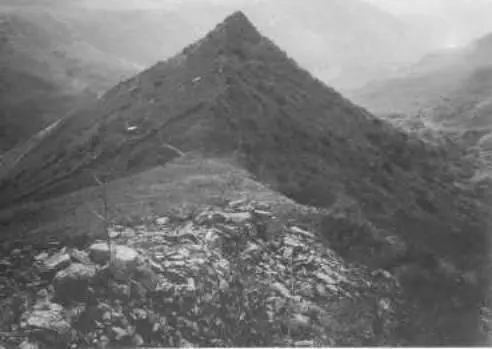
39. The pyramidal hill at Gamla in the Golan where the final citadel stood. Here, on 10 November 67 AD, 4,000 zealots died fighting the Romans and another 5,000 killed themselves by jumping over the cliff. The Dead Sea Scrolls provide an insight into the rationale which lay behind the mass suicides.
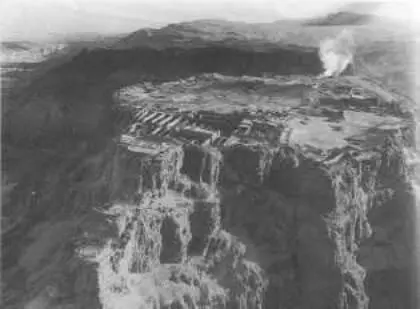
40. The ruins of Masada where, on 15 April 74 ad, 960 Zealots — men, women and children — killed themselves rather than surrender to the Romans.
Thus the authors of the Dead Sea Scrolls may be thought of as ‘Essenes’, but not in the sense as defined and described by Josephus, Philo and Pliny. The accounts of the classical chroniclers prove to be altogether too circumscribed. They have also prevented many modern scholars from making the necessary connections — perhaps, in some cases, because it was not deemed desirable to do so. If the connections are made, a different and broader picture emerges — a picture in which such terms as ‘Essene’ and ‘the Qumran community’ will prove to be interchangeable with others. Eisenman effectively summarises the situation:
Читать дальше
